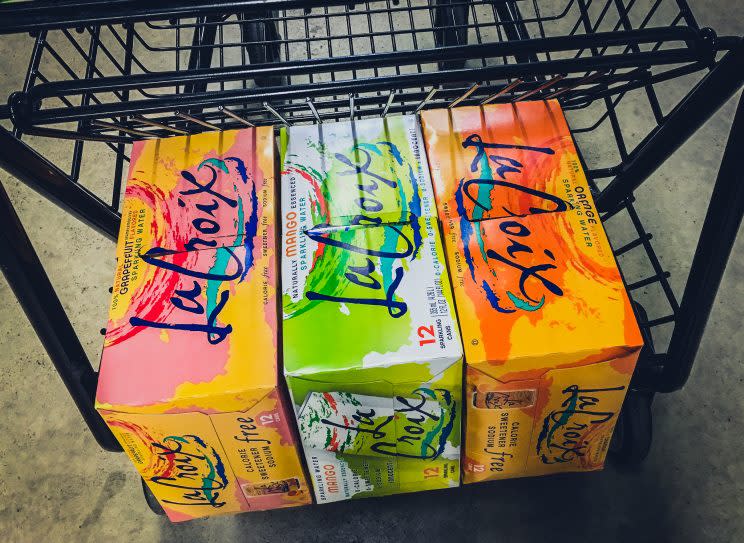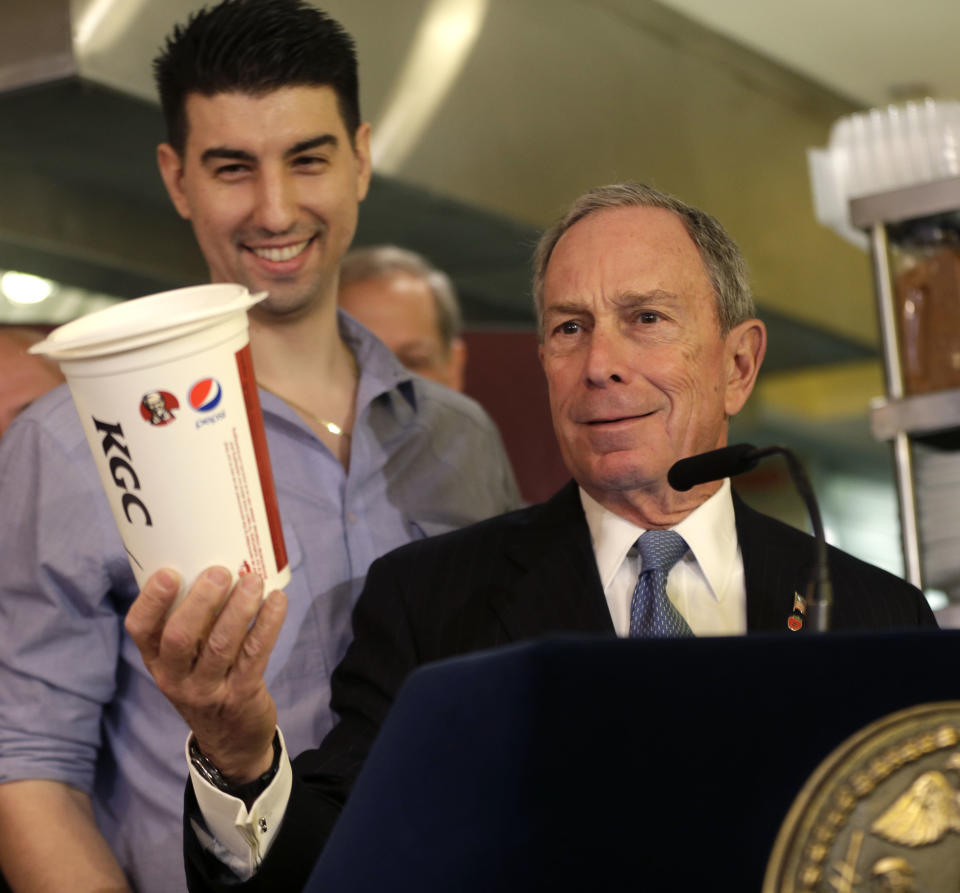Why sparkling water sales could spike by 20% in 2017

In the heat of the summer you might expect consumers to reach into the cooler and grab a soda, but it’s sparkling water that’s emptying shelves across the US these days.
“Sparkling water sales are booming,” Gary Hemphill of the Beverage Marketing Corporation told Yahoo Finance. “We project sparkling water sales will increase more than 20% in 2017.”
Sparkling water was once mainly considered a mix for cocktails, but is now an everyday drink for many Americans, according to Duane Stanford of Beverage Digest.
Take LaCroix sparkling water, which was created in a local family brewery in Wisconsin over 30 years ago and now touts itself as the best-selling domestic sparkling water brand in the US. LaCroix has had significant growth over the past decade, according to Stanford.
Unlike many sodas, LaCroix has bypassed traditional advertising on TV in favor of publicizing its products through social media engagement. Its colorful packing and unique taste have captured the eyes and taste buds of consumers.
A post shared by michruby (@michruby) on Jun 2, 2017 at 3:31pm PDT
Michelle Rubinstein, an avid LaCroix consumer, thinks that regular soda is too sweet and unhealthy, so she drinks LaCroix. She says that she loves “the array of flavors, packaging, taste, and the price is on point!”
Another avid LaCroix consumer, Maria Tomaino, tweeted to Yahoo Finance, “It makes me feel alive; opens my chest & I feel like I can take on the world. The best part of waking up is LaCroix in my cup.”
Of course, LaCroix is hardly the only sparkling water around. Talking Rain Beverage Company also has created Sparkling Ice, a line of 13 naturally flavored sparkling waters such as strawberry watermelon and grape raspberry. Meanwhile, Canada Dry Seltzer has a line of four sparkling water beverages, which includes unique flavors like lemon lime, mandarin orange, and raspberry.
Consumer behavior is driving change in the beverage industry
Americans may be reaching for flavored seltzers more often because politicians and public-health officials have increasingly tied sugary drinks like soda to obesity.
In 2012, former New York Mayor Bloomberg revealed a plan to ban sugary beverages larger than 16 ounces within New York City establishments. (The ban was later struck down.) The next year, former First Lady Michelle Obama joined Let’s Move to create “Drink Up,” an initiative to work with cities, private companies, and public taps to encourage people to drink more water throughout the day.

More recently, local governments have attempted to place soda taxes onto local establishments. Chicago’s Cook County, for example, tried to enact a soda tax that was slated to start on July 1 but was stalled by a lawsuit.
These anti-soda efforts may have influenced US consumers. Today, many consumers seek low- to no-calorie beverage options that fit their lifestyle. As a result, the American Beverage Association (ABA) continues to team up with key players in the beverage industry like Pepsico (PEP), Dr Pepper Snapple Group (DPS), and Coca-Cola (KO), in order to understand and meet these demands.
“Our belief is that you should give people choices,” Lauren Kane of ABA told Yahoo Finance. “We are providing such a range of choices and information so that people can decide what is best for them for that day.”
Alongside leading beverage companies and the Alliance for a Healthier Generation, the American Beverage Association has created the Balance Calories Initiative. This nation-wide, multi-year effort is aimed to help fight obesity by reducing beverage calories consumed per person nationally by 20% by 2025.
While some consumers might shirk soda completely, others might want a mix of low- to no-calorie drinks and sugary beverages. Major beverage companies are trying to provide consumers with more choices so they’re not necessarily drinking soda all the time.
Sport drinks are still a summer favorite
During the heat of the summer months, however, many athletic consumers still reach for their favorite sports drink. More than 60% of sports drink consumption comes in the second and third quarters (in the spring and summer), according to Hemphill of the Beverage Marketing Corporation.
As a result, major beverage industries continue to create sports beverages that provide low- to no-calorie options. In 2007, Pepsico created low-calorie version G2, a sports nutrition drink. Coca-Cola followed this area of growth when it created Powerade Zero in 2008.
The beverage industry will need to continue to create unique, new beverages in order to keep up with consumers’ changing tastes. Those options are likely to continue to include new no- and low-calorie options for health-conscious beverage seekers.
Brooke DiPalma is a reporter at Yahoo Finance. Follow her on Twitter @BrookeDiPalma
More from Brooke DiPalma:
Here’s which popular TV characters could afford their apartments in 2017
20 college discounts you never knew existed
‘This is the time to treat myself’: Why so many millennials eat out 5 times a week

